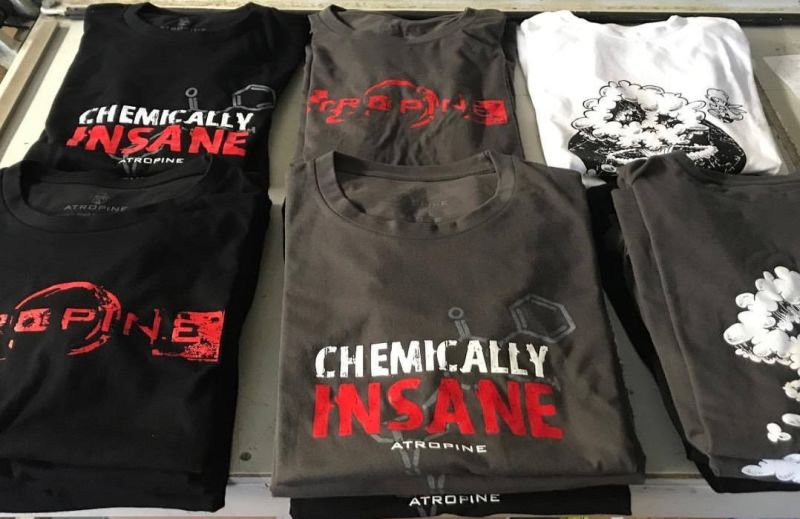Atropine
If you encounter bradycardia, don’t think “atropine deficiency,” think “oxygen deficiency.” - Sean M. Fox MD

image by: Atropine
HWN Suggests
Did Removal of Atropine From ACLS Impact Survival?
ACLS guidelines were changed in 2010, and atropine was removed. In this propensity score analysis from 2006-2015, which spanned this change, survival was not impacted in patients with a non-shockable rhythm. In fact, it increased slightly, though not statistically significantly, after removing atropine from the treatment armamentarium. There was also no difference in survival with good functional outcome after atropine was dropped. Shockable rhythm survival had a small decrease post-2010 guideline, which needs further study.
Resources
 Atropine Not Needed for RSI
Atropine Not Needed for RSI
This is a complicated process, which is not made easier by adding additional medications, especially, when that added medication may lead to a dose calculation error, adverse side effect, or mask of more important causes of bradycardia. For these reasons, atropine is not be routinely needed as a part of RSI.
 Epinephrine vs. atropine for bradycardic periarrest
Epinephrine vs. atropine for bradycardic periarrest
There aren't any prospective RCTs comparing atropine vs. epinephrine for bradycardia. In the absence of such evidence, the following is an argument for choosing epinephrine.
ACLS Guidelines – Atropine, Adenosine & Therapeutic Hypothermia
Atropine for Asystole: not recommended in asystole and PEA anymore, not due to negative studies, but rather to the realization that the evidence was always weak and therefore shouldn’t be considered positive. Atropine for Bradycardia: may increase ischemia in the setting of an MI, doesn’t work in transplant patients and is unlikely to work in patients with 2nd degree type II and 3rd degree block
How to Use Low-Dose Atropine to Slow Myopic Progression in Kids
Because of growing concern about pathological myopia, recent research studies focused on slowing progression of garden-variety myopia in children have garnered interest among ophthalmologists. Low-dose atropine (0.01%) has emerged as an effective approach, as highlighted by the Atropine in the Treatment of Myopia studies (ATOM1 and ATOM2).
Is Atropine Necessary for Cardiopulmonary Resuscitation?
The combination therapy of atropine and epinephrine during CPR showed poor neurological outcome compared with epinephrine alone. Atropine is not useful for adults with non-shockable rhythm in terms of 30-day neurological outcome.
Remember Atropine for “Killer B's”
Muscarinic symptoms can be remembered by the mnemonic DUMBELS, which is an acronym for Diarrhea, Urination, Miosis, Bronchospasm/bronchorrhea/bradycardia, Emesis, Lacrimation, and Salivation/sweating/secretion. Atropine is a muscarinic agonist and is able to reverse muscarinic symptoms. Atropine is especially useful when facing high-risk symptoms like bronchorrhea and bradycardia (killer B's).
Treatment of Bradycardia and Bradydysrhythmias
What are the latest recommendations about dosing of atropine and when is atropine likely to be detrimental?
Unstable Bradycardia
Doesn’t hurt to try, may work: .5mg IV, can be repeated q3min to a max dose of 3mg. · If atropine is not working, high probability it wont, then start transcutaneous pacing while getting chronotropic medication (pressors) ready and then titrating to desired effect
 Did Removal of Atropine From ACLS Impact Survival?
Did Removal of Atropine From ACLS Impact Survival?
Removal of atropine from the ACLS algorithm did not result in a decrease in survival in patients with non-shockable rhythms.
StatPearls
Atropine is the first-line therapy (Class IIa) for symptomatic bradycardia in the absence of reversible causes. While atropine can be used independently for anti-salivation effects, it most commonly is secondary to anticholinergic or antimuscarinic poisoning.

Introducing Stitches!
Your Path to Meaningful Connections in the World of Health and Medicine
Connect, Collaborate, and Engage!
Coming Soon - Stitches, the innovative chat app from the creators of HWN. Join meaningful conversations on health and medical topics. Share text, images, and videos seamlessly. Connect directly within HWN's topic pages and articles.













